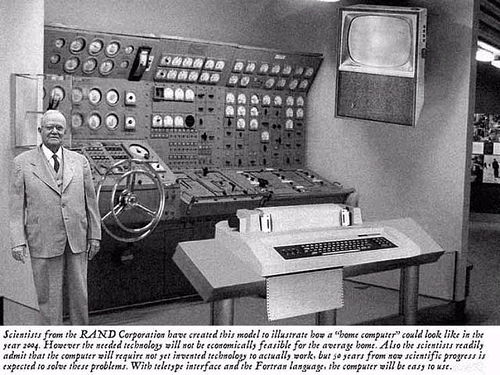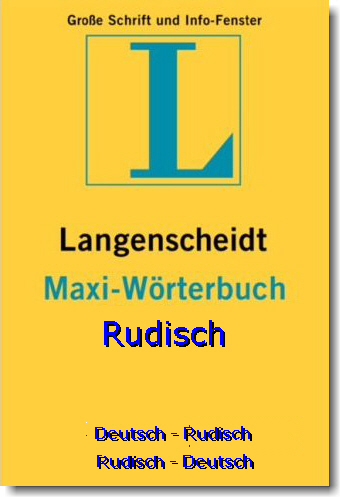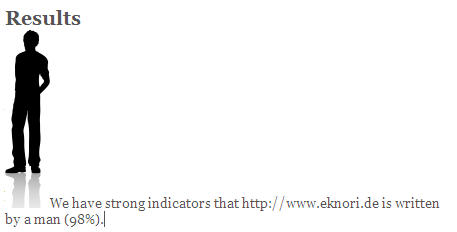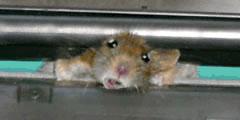Tag: Fun
Experts Like These
They always practice what they preach ?? Well think again after you have seen this
1954 – How could a computer look like in the year 2004

Scientists from the RAND corporation have created this model to illustrate how a “home computer” could look like in the year 2004. However the needed technology will not be economically feasible for the average home. Also the scientists readily admit that the computer will require not yet invented technology to actually work, but 50 years from now scientific progress is expected to solve these problems. With teletype interface and Fortran language, the computer will be easy to use.
What on earth the steering wheel is presumed being used for?
The Black Sheep Of The Family
You are an ILUG 2008 attendee? You are not from Ireland? Then you must read Episode 8 of Steve McDonagh’s “Guide to Irish Idiom for our non-irish guests“.
Für meine Leser aus Deutschland: Der Ausdruck “You don’t know jack (shit)!” meint soviel wie “Du weißt gar nichts!”
More Sudoku
Thanks to Andre Guirard, the Sudoku helper is now an automatic solver. It is real fun to watch the code find the solution. Recently I received an email ( in copy ) from Werner Goetz who improved Andre’s code for better performance.
What comes next? If someone cannot resist to write a web service client to solve Sudoku puzzles, her is the web service
.
Arjan Seesing provides a web service to solve Sudoku puzzles using candidate elimination together with back tracking.
Sudoku – Use Lotus Notes To Solve The Puzzle
 Sudoku is a logic-based number placement puzzle. The objective is to fill a 9×9 grid so that each column, each row, and each of the nine 3×3 boxes (also called blocks or regions) contains the digits from 1 to 9, only one time each (that is, exclusively). The puzzle setter provides a partially completed grid.
Sudoku is a logic-based number placement puzzle. The objective is to fill a 9×9 grid so that each column, each row, and each of the nine 3×3 boxes (also called blocks or regions) contains the digits from 1 to 9, only one time each (that is, exclusively). The puzzle setter provides a partially completed grid.
Completed Sudoku puzzles are a type of Latin square, with an additional constraint on the contents of individual regions. Leonhard Euler is sometimes incorrectly cited as the source of the puzzle, based on his work with Latin squares.
The modern puzzle was invented by an American architect, Howard Garns, in 1979 and published by Dell Magazines under the name “Number Place”. It became popular in Japan in 1986, after it was published by Nikoli and given the name Sudoku, meaning single number. It became an international hit in 2005.
There are numerous Sudoku solvers available, but no such solver or helper does work in my preferred tool: Lotus Notes.
Rudi Knegt showed his solution during the Closing session of this years Entwicklercamp. It works great, uses @Formula (loads of redundant code ), does need a lot of fields and the UI is ( sorry Rudi ) … ugly.
I started my first attempt to write a Sudoku solver/helper almost a year ago, but due to a heavy workload I never finished the project. During my last holiday under the Caribbean sun I decided to finish a first version until the end of this week.
Here is what the UI looks like

I used Notes 8.0.1 to create the database; the download contains the database as .ns6 file with ODS43. It will run from Notes 6 up as I use @ThisName and @ThisValue in some fields.
Create a new Sudoku from the menue and fill in the given fields. On top of every field you can see a line containing the possible values for a field. Now you can start to solve the puzzle by clicking into the squares and select a possible value from a dialogbox.
You can ( and should ) save the document frequently as there is no undo function yet.
Entwicklercamp 2008 – Rudisch
Lange ersehnt, endlich verfügbar. Das Wörterbuch zur Konferenz: Rudisch. Damit mann dem Hölländer auch versteht 🙂

My Album Cover
Others did it (Adam, Chris, Julian). So here is mine …

Here are the rules for the game:
1 – Go to Wikipedia’s random article page. The first article you get is the name of your band.
2 – Go to the Random Quotations page. The last four words of the last quote is the album title.
3 – Go to Flickr’s Interesting photo page. Third picture, no matter what it is, is your album cover.
4 – Put it all together to make your album. Either crop it to CD cover size, or just use the raw image itself … the only rule is you’re only allowed to add the album title and artist title.
What Is Wrong With Year 1700?
2008 is a leap year again. The Gregorian calendar, the current standard calendar in most of the world, adds a 29th day to February in 97 years out of every 400, a closer approximation than once every four years. This is implemented by making every year divisible by 4 a leap year unless that year is divisible by 100. If it is divisible by 100 it can only be a leap year if that year is also divisible by 400.
So, in the last millennium, 1600 and 2000 were leap years, but 1700, 1800 and 1900 were not. In this millennium, 2100, 2200, 2300, 2500, 2600, 2700, 2900 and 3000 will not be leap years, but 2400 and 2800 will be. You can find numerous examples in almost every programming language of how to determine if a year is a leap year or not.
In LotusScript as well as with @Formula you can “adjust” a given date to another date depending on the parameters you use. So the easiest method to determine a leap year is to set the date to March, 1st of the given year and “substract” one day. If the resulting date is Feb., 29th, the year is a leap year.
Here is my @Formula
_date:=[01.03.1700];
@Prompt([Ok];"Last Day";@Text( @Day( @Adjust( _date; 0;0;-1;0;0;0 ) ) ) )
I expected a 28 in the message box, but it prompted 29 ! Oups …
I tried the same using LotusScript and the NotesDateTime class
Sub Click(Source As Button)
Set dt = New NotesDateTime( Datenumber( 1700 ,3, 1) )
Call dt.AdjustDay (-1)
Msgbox dt.Localtime
End Sub
Guess what it returns. 29.02.1700 ! Another oups …
Seems that IBM / Lotus uses another calender than the Gregorian calendar. No surprise is that 🙂
You might want to try the next piece of code and watch what happens …
Sub Click(Source As Button)
Set dt = New NotesDateTime( Datenumber( 1700 ,3, 1) )
Call dt.AdjustDay (-1)
Msgbox Day (dt.Localtime)
End Sub
An error message occurs, stating that there is a “Type mismatch”. I guess that some subroutines deep in the core code are not sure which calendar to use; Gregorian or IBM calendar. By the way, you get the same error when replacing the 1700 by 1500, 1400, 1300, 1100 and 1000.
If you happen to travel to the year 1700 using a time machine, be careful when planning a meeting at the end of February …
Telekom – iPhone Ohne Vertrag
Das die Telekom das iPhone ohne Vertrag anbietet / anbieten muss, ist ja bekannt. Neu im Portfolio sind seit dieser Woche nun auch Profi-Radsportler ohne Vertrag …
Achmed – The Dead Terrorist
Watch Jeff Cunham and a dead terrorist named Achmed.
Link: sevenload.com
SILENCE!!! I KILL YOU! What do I care? I’m dead!!!
RFC 1149 – Standard for the transmission of IP datagrams on avian carriers
Pretty old but still funny …
[more]


